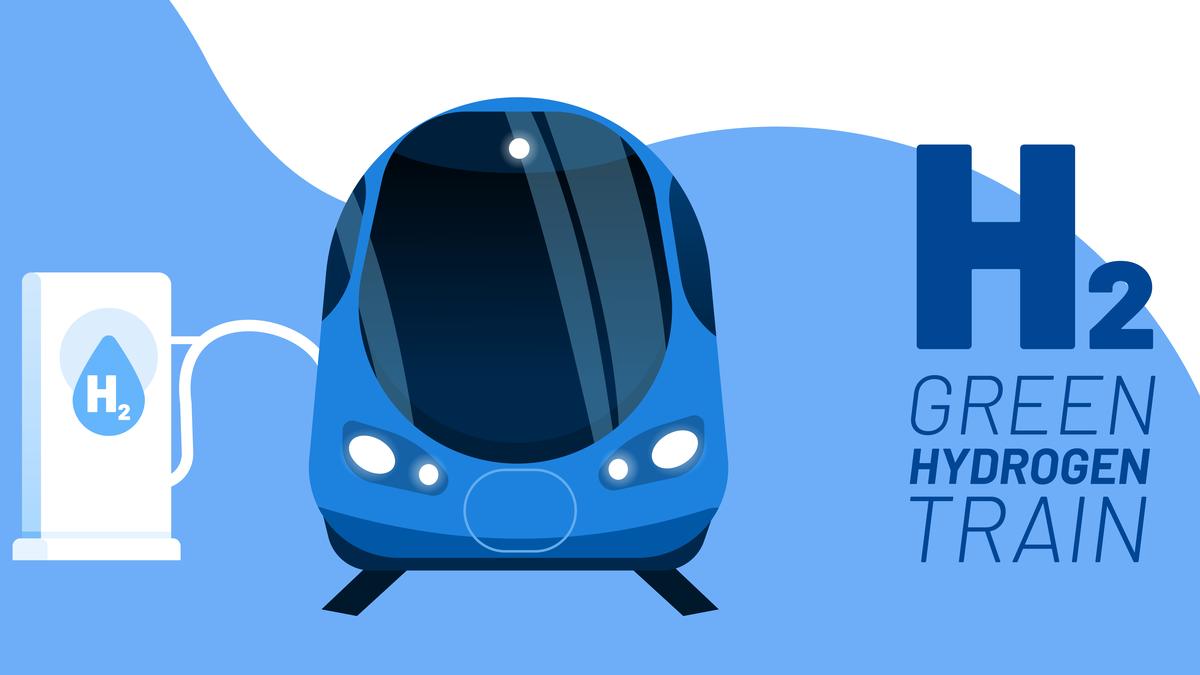The successful trial of India’s first hydrogen-powered coach at the Integral Coach Factory (ICF) in July 2025 is more than a technological breakthrough. It is a testament to Indian Railways’ accelerating green transition.
As one of the largest rail networks in the world, the Indian Railways is undertaking a transformation with few global parallels, with the aim of achieving net-zero carbon emissions by 2030, four decades ahead of the national target.
This ambitious shift is not just limited to clean energy adoption but also extends to a fundamental rethinking of infrastructure, operations and financing models, placing the Indian Railways at the forefront of India’s sustainable development agenda.
With over 24 million passengers and three million tonnes of freight moved daily, the decarbonisation of India’s railways has direct implications for national climate targets.
The initiatives undertaken
In the last 10 years, the Railways has electrified close to 45,000 kilometres of its broad gauge network. As a result, over 98% of its broad gauge network stands electrified, reducing diesel dependence and cutting emissions sharply. The transition is complemented by large-scale renewable integration, with 553 MW of solar, 103 MW of wind and 100 MW of hybrid capacity (756 MW in total) already commissioned. More than 2,000 stations and service buildings are powered by solar energy, while several railway buildings, including in the Northeast Frontier zone, have secured the Bureau of Energy Efficiency’s “Shunya” net-zero label. Innovation in clean traction is exemplified by the first hydrogen-powered train, part of a wider “Hydrogen for Heritage” initiative to deploy 35 such units.
Parallel measures include shifting freight from road to rail to raise its modal share to 45% by 2030, introducing biofuel blends, constructing green buildings, and operationalising Dedicated Freight Corridors which are expected to avert 457 million tonnes of carbon dioxide (CO2) over 30 years. These steps signal a technological transformation and a systemic reimagining of the Indian Railways as a climate-positive backbone of national mobility.
Climate finance takes the main line
The decarbonisation drive is increasingly underpinned by a robust and evolving green finance architecture. Since FY2023, the government has issued sovereign green bonds worth ₹58,000 crore, with the transport sector emerging as a major beneficiary. According to data from the Ministry of Finance, approximately ₹42,000 crore has been allocated for the procurement of electric locomotives and metro and suburban rail expansions. These allocations integrate climate objectives into the very core of capital budgeting.
At the institutional level, the Indian Railway Finance Corporation (IRFC) has played a pivotal role in mobilising climate aligned capital. Beginning with its $500 million green bond issuance in 2017 which was utilised for the re-financing procurement of electric locomotives, the IRFC has steadily expanded its green financing footprint. Most recently, it extended a ₹7,500 crore loan to NTPC Green Energy for the development of renewable power capacity, signalling a growing trend of cross-sectoral financing aimed at strengthening India’s low-carbon infrastructure.
Multilateral agencies have also supported the green transition of the Indian Railways. In June 2022, the World Bank approved a $245 million loan for the Rail Logistics Project, aimed at enhancing rail freight infrastructure, decongesting corridors and reducing greenhouse gas emissions.
Yet, more can be done. The first priority is to match electrification with genuinely decarbonised electricity. If the additional traction power is drawn from a coal-heavy grid, climate gains will be diluted. A solution lies in directly procuring large volumes of renewable energy through long-term contracts with solar and wind producers, a step that has already seen some progress. This would ensure that “green trains” are powered by truly green power, making emissions reductions real rather than notional.
Second, last-mile connectivity must be approached with a climate lens. Railway stations should evolve into multi-modal green hubs, seamlessly integrating electric buses, bicycle-sharing networks and pedestrian-friendly infrastructure. For freight, the low-carbon advantage of rail must be preserved through cleaner first-and-last-mile links, whether through electric trucks, Liquefied natural gas-powered vehicles, or emerging hydrogen mobility solutions.
Third, rolling stock innovation must keep pace with global benchmarks. Hydrogen fuel cell trains could be piloted on select non-electrified branch and heritage lines where full electrification is not cost-effective. In parallel, the adoption of lightweight coaches, aerodynamic locomotive designs and Artificial Intelligence-driven energy optimisation systems can reduce traction energy needs and improve operational efficiency.
Finally, technology alone will not drive transformation; behavioural change is equally critical. Green certification for trains, carbon labelling of freight services and public awareness campaigns can make passengers and businesses conscious participants in climate action. With its vast daily reach, the Indian Railways can shape public perception of sustainable mobility in a way no other transport system can.
Meeting the challenge
By 2030, if the net zero target is achieved, Indian Railways could prevent over 60 million tonnes of annual CO2 emissions which is equivalent to taking 13 million cars off the road. The financial case is equally compelling: electrification and energy efficiency measures are projected to generate cumulative fuel cost savings of over ₹1 lakh crore by the end of the decade.
The challenge is not in setting targets but in mobilising and managing the capital to meet them. Done right, India’s railway decarbonisation plan could become a global benchmark, proving that large, state-run transport systems can transition to low-carbon operations without derailing fiscal discipline.
Ishaan Sharma is an IRAS officer, currently posted as Deputy Financial Adviser and Chief Accounts Officer, South Western Railway. He is also the recipient of the Chevening Scholarship from the Government of UK, 2023. The views expressed are personal
Published – October 14, 2025 12:08 am IST
